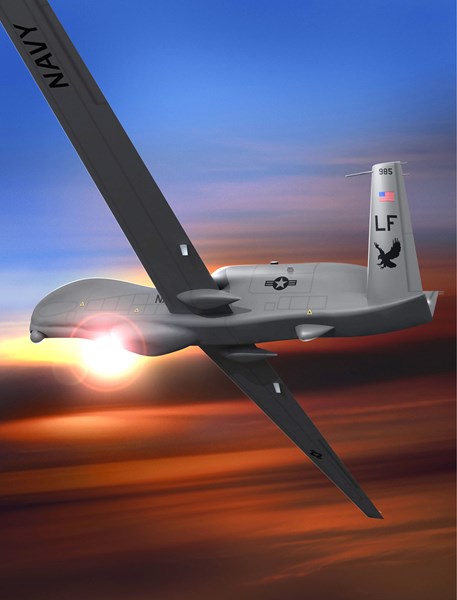WASHINGTON, July 16, 2007 (PRIME NEWSWIRE) -- Northrop Grumman Corporation (NYSE:NOC) is conducting a range of system simulations in a prototype Broad Area Maritime Surveillance (BAMS) Mission Control System (MCS) to validate operational models while generating performance measures and manning effectiveness.
A photo accompanying this release is available at http://media.primezone.com/noc/
The Northrop Grumman BAMS Head Start team has integrated the MCS into a mock-up of a Tactical System Center (TSC) used by the Maritime Patrol and Reconnaissance Forces (MPRF), allowing for full system effectiveness modeling of the Northrop Grumman BAMS solution concept within a realistic U.S. Navy environment.
Northrop Grumman's Cyber Warfare Information Network (CWIN) is being used to tie the prototype MCS to a Global Hawk system simulator in Rancho Bernardo, Calif. and the Concept Exploitation Lab for Maritime Patrol and Reconnaissance C4I in Hollywood, Md. The system simulations allow complete leverage of the pre-existing modeling and simulation of the RQ-4B Global Hawk system as modified for BAMS.
"The tests being conducted are validating the proposed MCS design within a representative TSC," said Carl Johnson, Northrop Grumman BAMS program vice president, "demonstrating the tactical capability with objective manning levels. We have found that the high degree of air vehicle autonomy found in the RQ-4N and our operator decision support tools allow for fewer operator actions to complete an assigned mission, thereby reducing manning requirements."
The manning experiments are exploring the workload and training requirements of BAMS MCS personnel. Tests conducted have validated the capability to operate the system with only two people, a mission commander/pilot and a sensor operator. The company is quantifying the significant efficiency improvements for the two-person crew, augmented by existing MPRF watch-standers, through the prototype and simulations. The improvements are enabled by Northrop Grumman's next-generation MCS design that includes advances in ergonomics, graphical interfaces and operator support tools.
The capabilities of the proposed BAMS system posed a challenge in creating a realistic simulation environment. The Global Hawk's speed and field of view from its operational altitude enables it to cover more than 170,000 square nautical miles each hour. The unmatched system payload capability, without trade-off of fuel load, provides robust multi-sensor operations requiring a high degree of simulation fidelity to allow for operational evaluation and refinement.
"Our prototype MCS provides the opportunity to evaluate and refine operator decision support tools while integrated into a representative MPRF TSC facility," said Dennis Wojcik, leader of the MCS integrated product team. "The MCS leverages advances in commercial networking and service oriented architectures."
The TSC development lab is the result of Northrop Grumman's 15 years of experience developing, integrating and providing support for the MPRF community. Both the prototype and the production MCS design will be run on commercial off-the-shelf (COTS) computers with non-proprietary commercial/government applications to take full advantage of an Internet Protocol (IP)-based architecture.
"The CWIN simulation environment allows us to rapidly insert new capabilities and evaluate operator actions and tactical utility over areas measured in hundreds of thousands of square nautical miles with representative track densities," said Wojcik. "It has given us opportunities to review and refine the system design and operator applications in advance of the System Design and Development program and has helped us to accurately characterize system performance and significantly reduce schedule risk."
The Northrop Grumman RQ-4N BAMS team includes Northrop Grumman as prime contractor and team leader, unmanned aerial vehicle supplier and developer of the Multi-Function Active Sensor active electronically scanned array radar and Night Hunter II electro-optical infrared sensor; L-3 Communications providing communications integration; Raytheon supporting the MCS segment; and Rolls-Royce providing the aircraft engine.
BAMS will supply the U.S. Navy with a persistent global intelligence, surveillance and reconnaissance system to protect the fleet and provide a capability to detect, track, classify, and identify maritime, littoral and land targets.
Northrop Grumman Corporation is a $30 billion global defense and technology company whose 120,000 employees provide innovative systems, products, and solutions in information and services, electronics, aerospace and shipbuilding to government and commercial customers worldwide.
